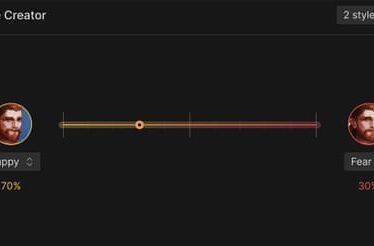
Images and Article from www.businessoffashion.com.
If an array of start-ups and fashion power players have their way, in the future every item of clothing, watch or handbag you buy will have a digital twin.
Scan a QR code on a garment and it would pull up a web page packed with information about that item, from the materials used to styling suggestions and perks, like access to exclusive products.
The same web page could even link out to a resale partner, so you can easily list your purchase for sale once you’re done wearing it. If you were the buyer of that used item, you could verify its authenticity by seeing the previous owners going back to its maker. And perhaps, if you were that maker, you could get a royalty every time the item was resold.
A product existing at the centre of its own ecosystem of data and services is well-established in other markets, particularly big-ticket, tech-heavy items like cars. But fashion has only dabbled in the idea, such as using RFID tags for inventory tracking in a warehouse. Interest in giving products individual IDs is growing, however, especially as companies and consumers get more comfortable using blockchain technology to unlock new opportunities.
Breitling is now issuing blockchain-based digital passports for its watches with features like proof of authenticity and service notifications. Blockchain also powers Hublot’s electronic warranties, which customers activate by taking a picture of their watch with a phone.
It’s still a long way from being standard in fashion, though. For certain items made in limited quantities, such as luxury watches, assigning a digital ID is relatively straightforward. But the biggest brands can put millions of items on the market each year, each of which would need a tag such as a QR code or NFC chip.
Getting the setup right still leaves the biggest question unanswered: whether customers will use them. Brian Kilcourse, managing partner at the research and advisory firm Retail Systems Research, put it this way: “It has to be more valuable to use it than to ignore it. Consumers aren’t kicking up their heels about this stuff.”
Bridging Physical and Digital
A host of start-ups are trying to make digital twins commonplace. Many taking on the task, such as Lablaco and Arianee, rely on blockchain for the undertaking, associating each item with its own non-fungible token, or NFT. It’s a method also used by the Aura Blockchain Consortium, a nonprofit formed by luxury power players including LVMH, Prada and Richemont-owned Cartier. Aura has registered “double-digit millions” of products on its private blockchain, Daniela Ott, general secretary of Aura, told BoF last year.
Eon, which recently received funding from Imaginary Ventures, the venture firm of Net-a-Porter founder Natalie Massenet and investor Nick Brown, creates IDs that aren’t blockchain-based but says brands can still log them on any blockchain they want.
But to make digital IDs as useful as possible requires establishing common standards so each digital ID platform isn’t a closed system with a limited set of capabilities. Brands already have much of the information needed to give their products a basic digital identity in their inventory-management systems, but the data needs to be extracted and processed.
Eon’s partners plug into its platform via an API. They so far include luxury and designer businesses, like Yoox Net-a-Porter and Gabriela Hearst, and mass-market retailers such as Target.
“All the product data is basically in a vault,” said Natasha Franck, Eon’s founder and chief executive. “We’re saying, ‘okay, there are five million of this sweater in this size, in this colour, produced at this factory.’ And we generate the five million unique, serialized IDs.”
The information can be embedded in a QR code, NFC chip or RFID tag and attached during manufacturing. The exact form varies by product. Clothing might get a QR code beside its washing instructions but a handbag might have an NFC chip sewn into it.
Eon aims for its platform to be useful at different times in a product’s life. Sustainability information or styling suggestions can be helpful when a customer is shopping. The same menu offering those selections could also provide an option to resell the garment through a participating reseller or guide the user to a textile recycler if the item no longer has resale value.
Aura has imagined using digital IDs to enhance the storytelling around luxury goods. Ott said her dream is to show video of the actual person who made a watch or a bag. Lablaco is working to link its digital IDs to virtual versions of the garments.
“They can be used for augmented reality experiences such as try-ons,” said Lorenzo Albrighi, Lablaco’s co-founder and chief executive.
The company is even building a virtual world where the digital twins can be worn, though its main focus is enabling circularity. H&M trialled its technology for a rental program at a Berlin store last year and it recently worked with Weinsanto on a collection for Dover Street Little Market in Paris. The clothes have “timelines” where their owners can record memories and other content. (Lablaco said it is migrating from the Ethereum blockchain to the less energy-intensive Flow blockchain.)
Scaling Up
A challenge all players creating digital IDs face is making them as functional as possible.
“A product ID is not valuable at all unless it connects to other applications,” Franck explained. It’s why Eon is building a network of partners for its digital twins to link to.
Arianee made its protocol open-source for any developer to use. Lablaco is now trying to build an open-ended platform. Its first partner will be FibreTrace, which allows companies to track materials through the supply chain, Albrighi said.
More utility may prove key to getting consumers to use these digital identities.
“We’re just in very early days,” said Sucharita Kodali, a vice president and principal analyst at Forrester. “They’re building the data layer right now. There needs to be a user layer.”
Rival companies may not always cooperate though and may not want to be on the same platform. If digital IDs don’t provide enough value for consumers to pay attention to, it’s uncertain how long brands will devote resources to them.
But proponents argue they’ll unlock benefits for brands and shoppers alike. In a recent interview with BoF about Imaginary Ventures’ investment in Eon, whose board she is joining, Massenet described digital IDs as a way to bring physical fashion into web3, an envisioned evolution of the internet toward a decentralised architecture powered largely by blockchain. She likened creating the IDs to laying the railroads at the start of the Industrial Revolution.
In her view, commerce has steadily moved away from a centralised model where the consumer, the product and the retailer are together in one location. E-commerce made the product into a data point; the shopper didn’t need to be physically near it and it could be stored in a warehouse. The rise of marketplaces made it so the retailer didn’t even need to own the product, and the spread of peer-to-peer commerce has further decentralised shopping. In this context, products need their own distinct, digitised identities.
“We are at the dawn of so many new developments in retail that are going to transform how consumers, brands and businesses interact,” she said.
Article shared from www.businessoffashion.com



